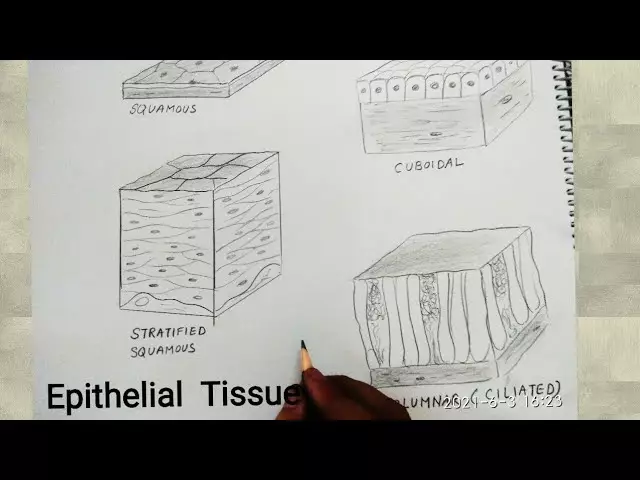- Author Curtis Blomfield [email protected].
- Public 2023-12-16 20:44.
- Last modified 2025-01-23 17:01.
The human body, like all living things, consists of independent structural and functional units - cells. They, in turn, according to common features (origin, morphology, functions) are combined into tissues, from which all our organs, blood vessels, blood and lymph are built.

A special part of them is the epithelium, since it prevails in the body and performs integumentary and secretory functions. Thus, the skin and serous membranes are built on its basis, it forms the structure of all glands of internal and external secretion. And most importantly, it lines all internal organs and blood vessels (squamous epithelium). That is, it is borderline, one way or another, between the body and the external environment. This tissue is built from epitheliocytes, which are firmly connected to each other using various methods of intercellular contacts: bands of gluing and closing, as well as special finger-shaped protrusions of the membrane - interdigitations. Also, they are held together by the so-called. a cementing agent containing a large amount of hyaluronic acid. In this way, solid layers are formed, which are usuallyare attached to the basement membrane, and their nutrition is provided by even more underlying loose fibrous connective tissue with vessels and nerves. All ions and energy substrates pass into the epithelial cells by diffusion through thin-walled capillaries.
Classification and functions
According to the morphology and structural features, it is customary to distinguish between squamous, cubic, cylindrical, stratified, ciliated (ciliated) and glandular epithelium.

In turn, all subtypes, except for the last one, form a common group of integumentary type, since they delimit the environment of the body from the environment and carry out the exchange of substances between them by absorption and excretion. Also, the epithelium, including squamous, protects all underlying layers from various damages: mechanical, chemical, physical, etc. In this regard, it has the highest regenerative capacity compared to other tissues of the body. Its importance is especially great for the skin and respiratory tract, since they are in direct contact with the external environment. Also, the squamous and glandular epithelium lines the organs of the gastrointestinal tract and the genitourinary system, protecting against adhesion and the introduction of pathogenic bacteria, as well as poisons and toxins.
Role in diagnosis

Because cells are constantly being renewed, dead cells are shed off and carried away by the urine stream or absorbed by macrophages in the blood. In this regard, the epithelium is flat, the norm of which in the general analysis of urine is 1-2 in the field of view of the microscope,has some diagnostic value. Moreover, if in men it is rarely determined, then in women it is almost always. The reason is the different structure of the excretory tract: in the stronger sex, the squamous epithelium enters the urine only from the lower third of the urethra, and in the weak, also from the vagina. In the presence of inflammation in the urinary tract, its amount can increase dramatically, but the transitional epithelium, which is normally absent in the analyzes, is of greater diagnostic value.






